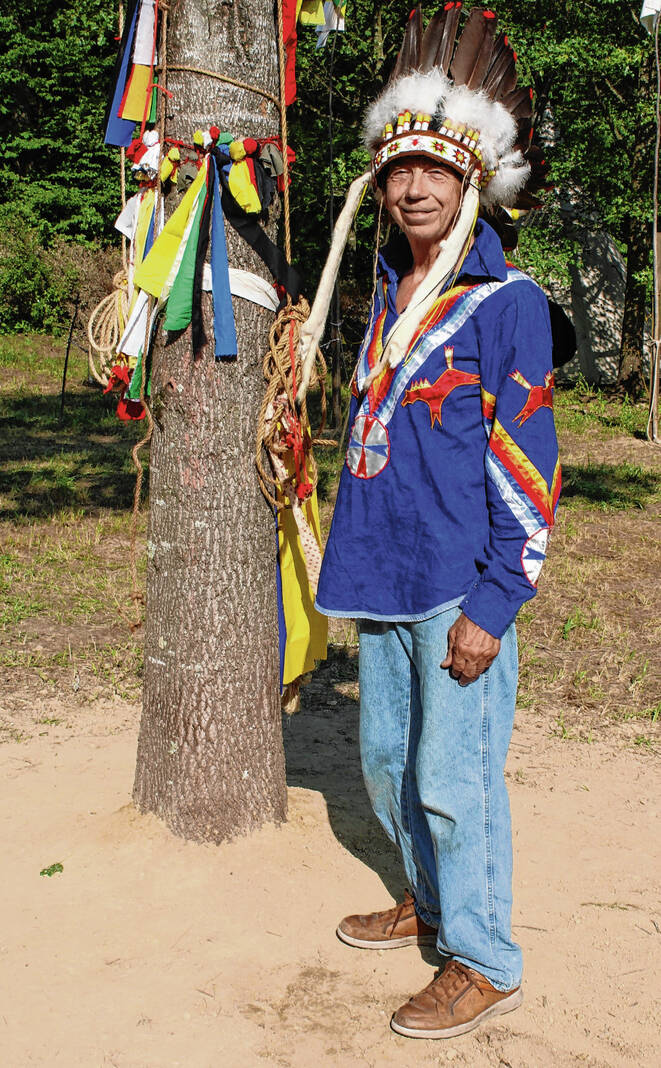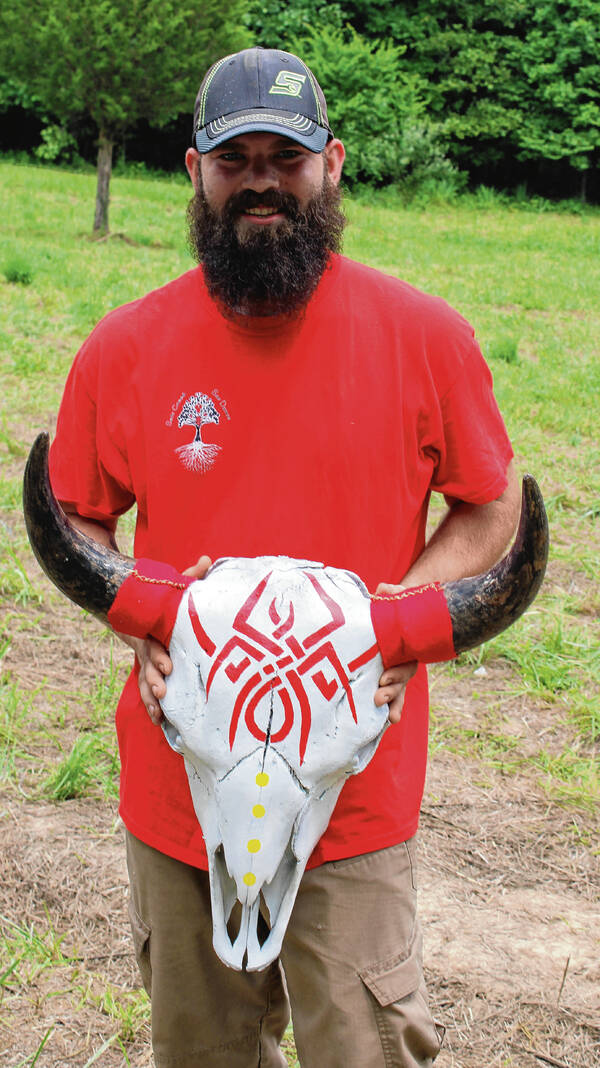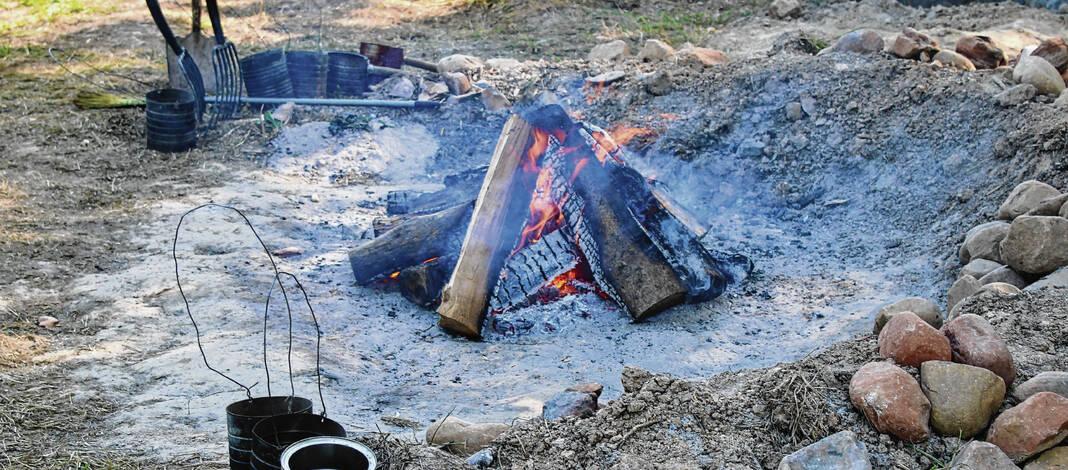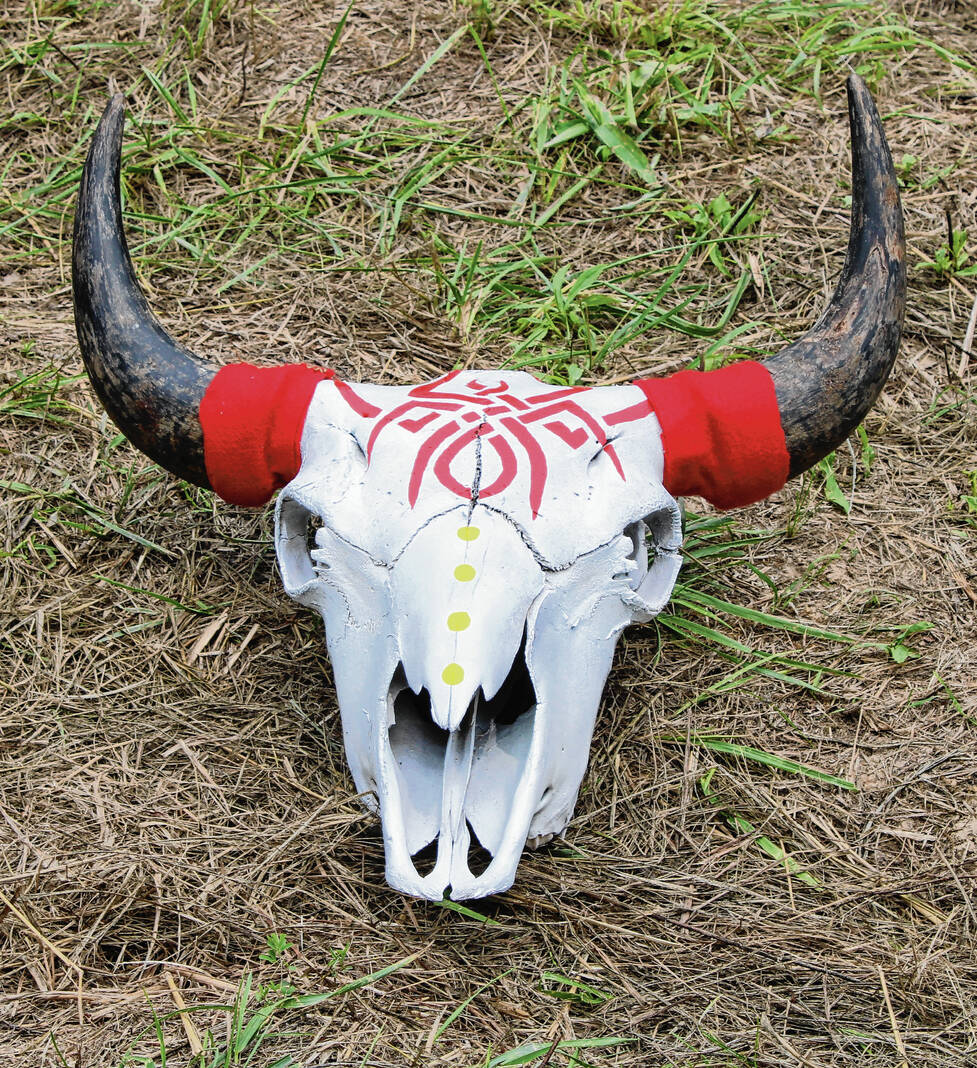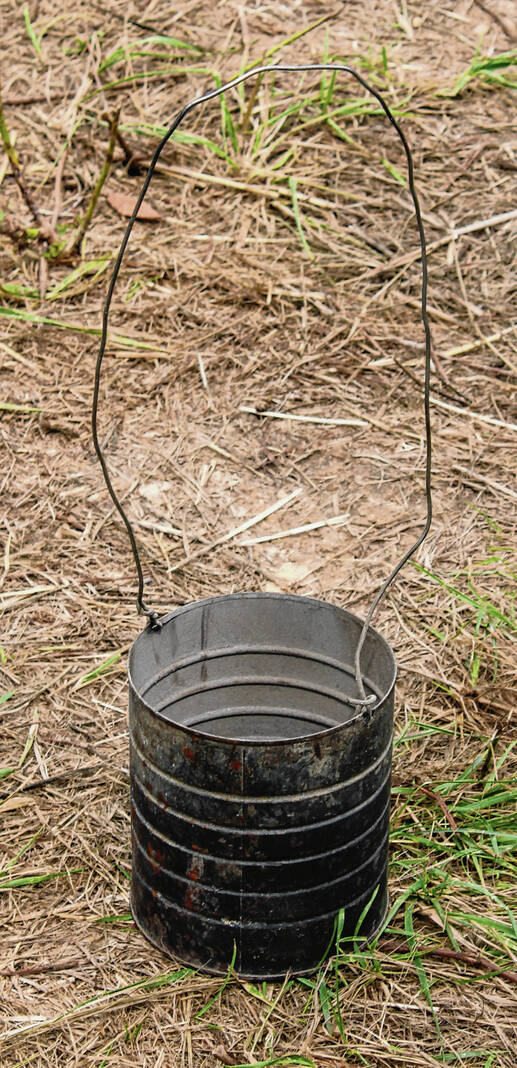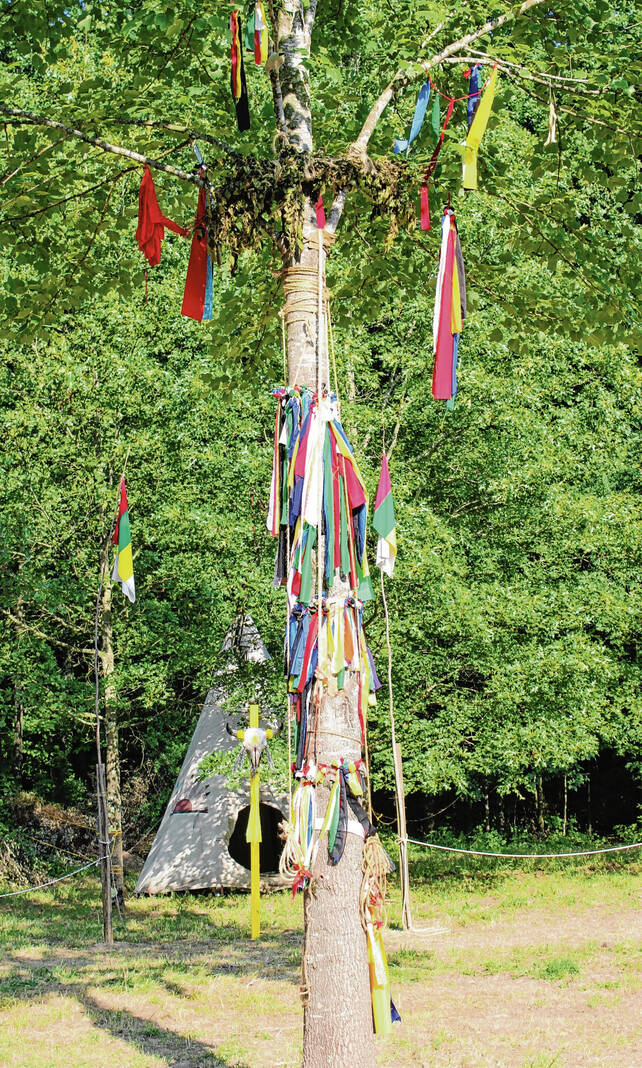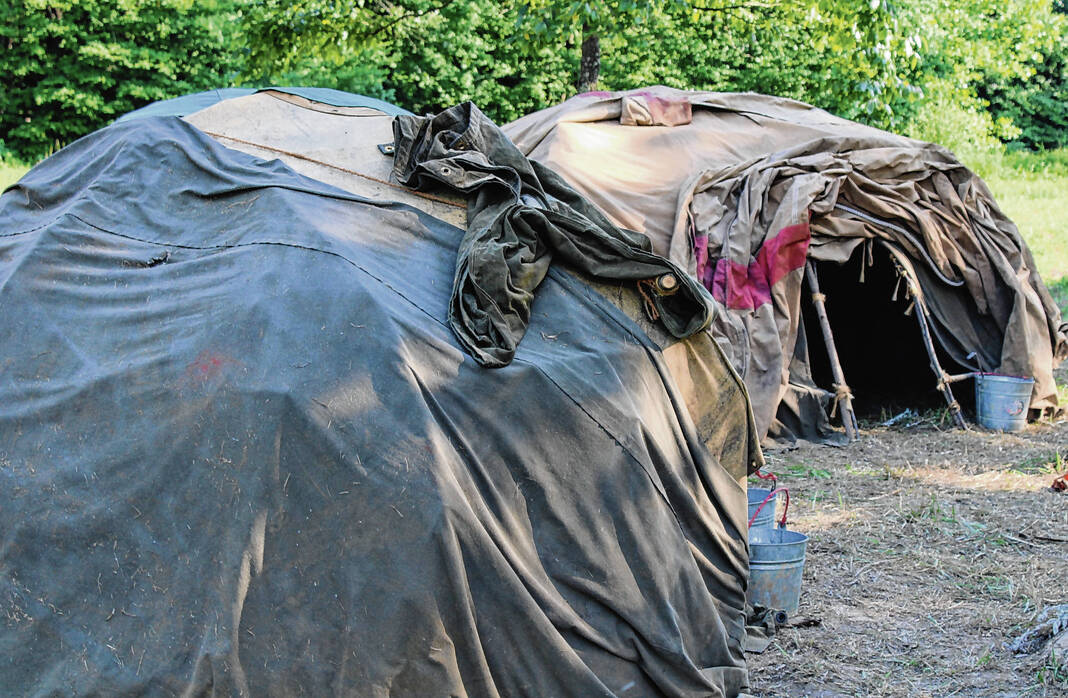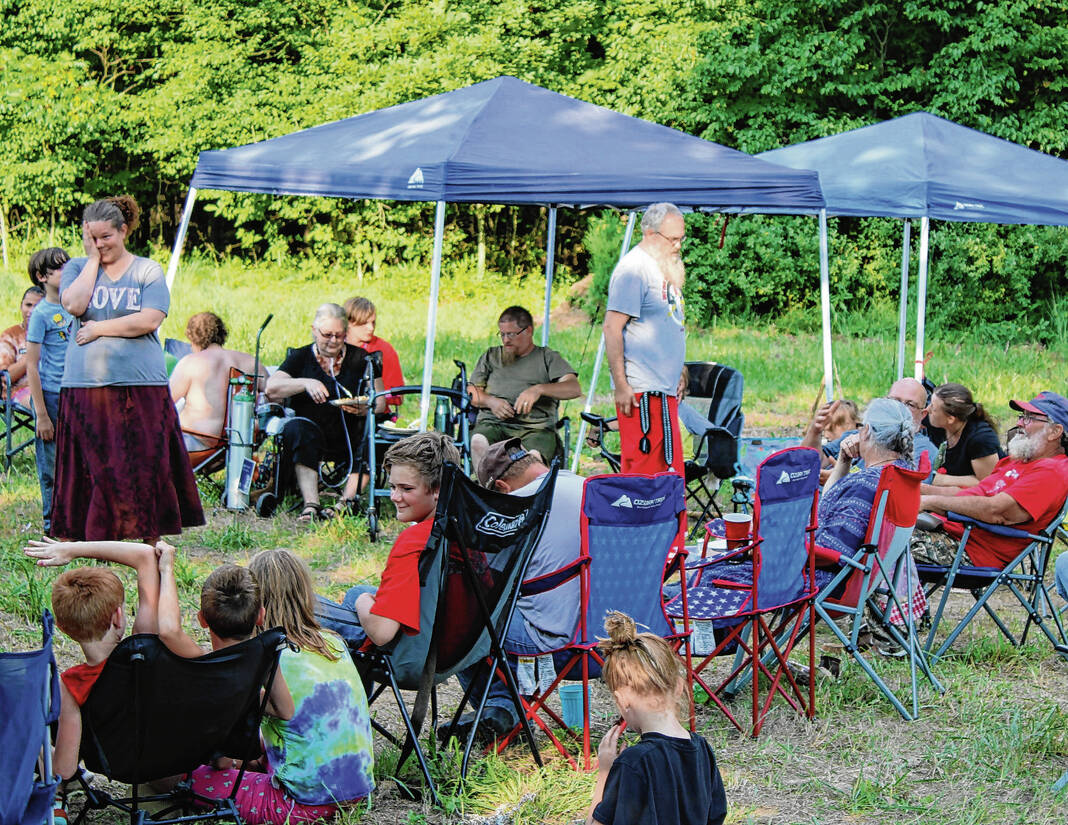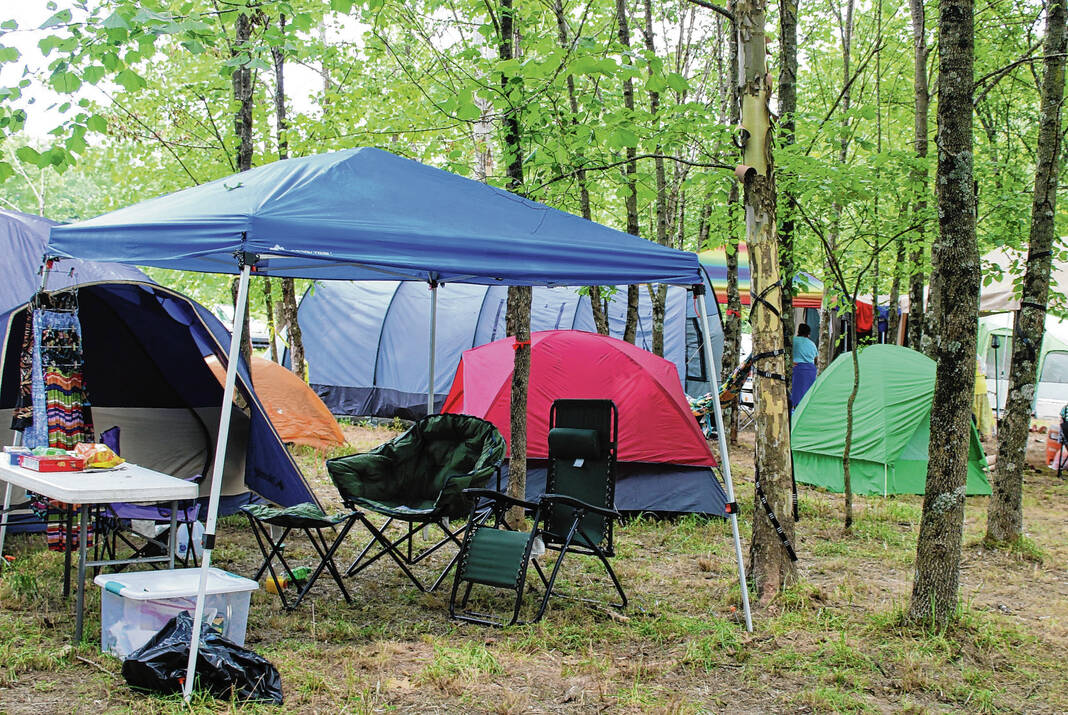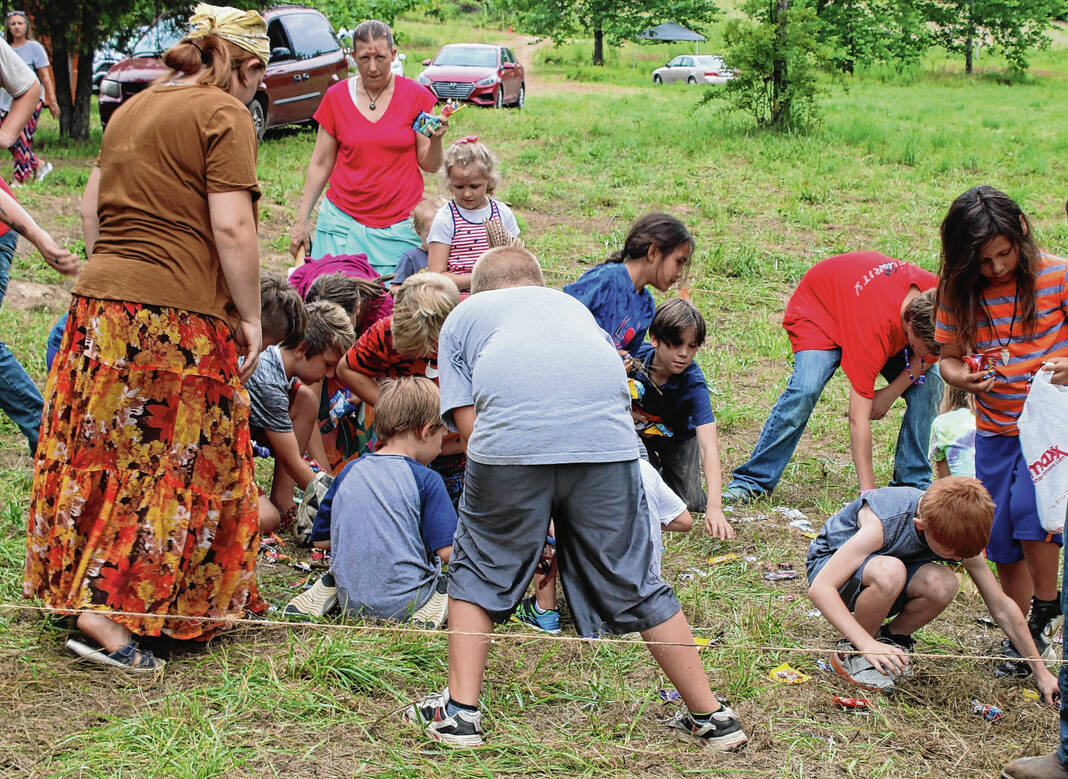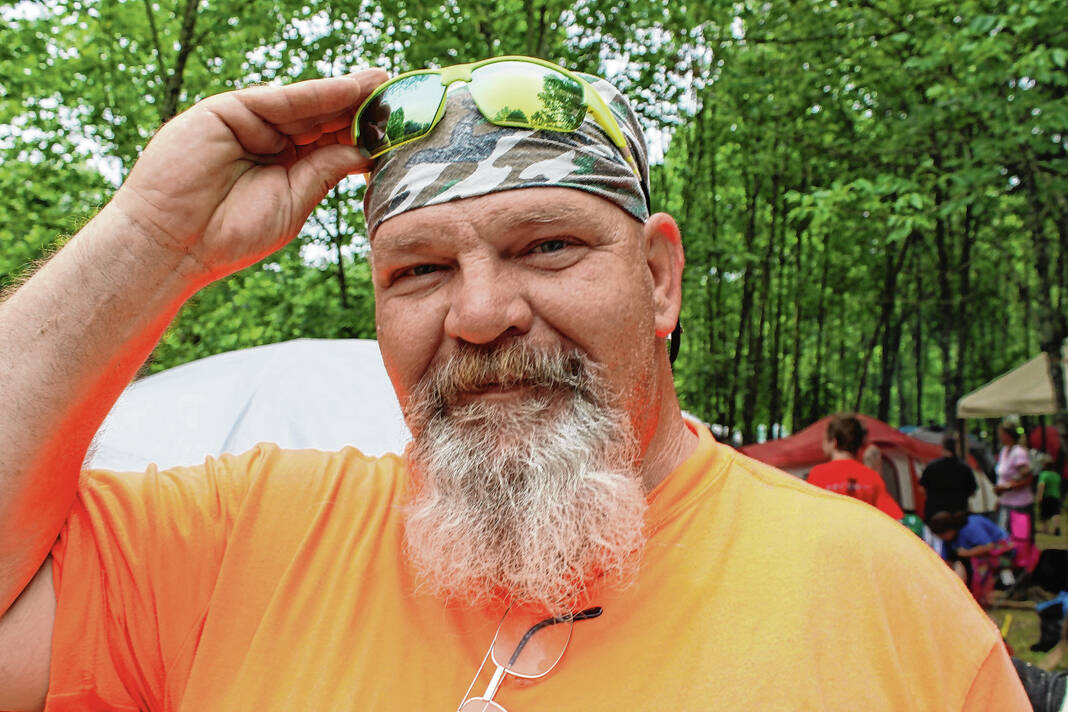NORMAN — The poplar tree designated as the Tree of Life for the Salt Creek Sun Dance stood tall and proud, decorated with a religious bundle and ribbons of many colors.
This was the prayer altar dancers circled while they prayed to the spirits against the backdrop of the steady beat of a drum.
So much to pray about, personal hopes, for sure, but also big and powerful and awful things going on in the world. Things like missing indigenous girls and women, killed or kidnapped. Things like the war in Ukraine.
Chief Steve McCullough prayed for such terrible activities to cease. And he gave thanks for his own good fortune.
The soft-spoken McCullough, 69, suffered a near-deadly heart attack a few years ago, and while he lay in his hospital bed, he heard voices from the hallway.
“It was the spirit people come to doctor me,” McCullough said. “They gave me another chance at life.”
The 31st annual Salt Creek Sun Dance, stretching from July 9 to 16, on private land a handful of miles south of Norman, was back in Jackson County for the first time in 11 years. The sun dance ceremony, of Lakota Sioux origins but adopted in different forms by various Native American tribes, involves purification and for the most serious dancers, sacrificing of small bits of flesh.
That was one test of faith and commitment. Another was crawling into a sweat lodge that might heat to 130 degrees or more.
“You’re sweating, getting out your impurities,” said Jack Fish, a local organizer.
A sacred fire burned in a rock circle throughout the ceremonies where rocks the size of softballs were lifted with shovels and deposited at the doorway of the lodge.
“The fire does not go out,” Fish said.
One year, to protect from heavy rain, participants ripped off the hood of a car and shielded the fire.
The fire is critical, said Bill Fox, who came from Thompsonville, Illinois, and was the keeper of the flame, ensuring the flames did not falter.
“We were all formed from a fire,” Fox, 70, said at his 29th Sun Dance in this region.
A sun dance is not a dance festival in the way a pow wow is. It was forbidden for visitors to illustrate aspects of the religious ceremonies with photographs or drawings.
Men danced bare-chested, wearing waist-to-ground skirts over shorts. Women were fully dressed. Preparation filled the first four days, including raising of tents for camping. Dance sessions occurred on each of the last four days. Four dancers who chose to dance every day were required to fast and avoid even water for the duration. Others danced just one day. When fatigued, some dancers lay down on sacred bison hides.
Bison were always revered in native culture, and many skulls were sprinkled around the grounds.
“Every round, every day has been special,” said McCullough, who danced daily.
Going bare-chested showed off the long surgery scar that followed his cardiac arrest of November 2018. It was physical evidence reminding him and others of his health ordeal and of his connection to the spirits.
“The spirits were just coming in and out,” McCullough said of his time in the hospital and the whispers he absorbed. “It rejuvenates the soul.”
He still recalls the beat of the drum from the hospital corridor and inside his head.
Drums throughout history
Native American drum sounds are familiar to most Americans because they were often used in Western movies to provoke a feeling of dread prior to a fictional battle.
At the Salt Creek Sun Dance, whenever the drummers played with their consistent thumping, a dance began. For those not participating per se, it was common to ring the sacred circle, or arbor. They kept time, wooed in the way music can infiltrate the bones.
“When the drums beat, feet don’t stop,” Fish said.
The setup for the sun dance began days before the dancing. A tree was selected, a sacred circle with a 60-foot radius was created and a plentiful supply of wood was hauled in. In all, about 100 people made camp.
For years, McCullough said many people journeyed from Europe for the sun dance. The COVID-19 pandemic took a toll on long-distance travel, although one visitor came from Hawaii. There were numerous attendees from Midwestern states.
There were two sweat lodges resembling heavy-duty canvas tents. The larger one could hold as many as 25 grown men. The smaller lodge, nicknamed “the microwave,” held perhaps six. The smaller lodge heats up very quickly.
A longtime veteran of sweat lodge visits is J.D. Fish, 51, Jack’s father, part of the local sun dance organizing since it began, or more than half of his life.
Only once, J.D. said, did a scorching-hot temperature, plus smoke, drive him from a lodge before he was ready to exit. Rocks are essentially cooked in the fire, transported to the lodge, and water is ladled on to make them steam. Lava rocks are best. River rocks not as good.
“One time, I did crawl out of there,” J.D. said. He took a stab at the possible temperature, maybe 170 degrees.
J.D. said it is particularly soothing to come out of a sweat lodge and flop down on snow. Jack said no matter the outside temperature — and it was mostly in the 80s with sunshine this week — “it’s always cool.”
Whether it is piercing skin or steeling oneself to endure intense temperatures, nobody promises the sun dance will be easy.
Just as it long has in its overall relationship with Native American tribes, the U.S. government once permanently banned the sun dance.
The most famous sun dance of all took place June 6, 1876. Sitting Bull, famed Sioux chief and medicine man, withdrew to the Rosebud River Valley for a sun dance retreat.
According to the PBS documentary “The West,” Sitting Bull sacrificed more than 100 pieces of flesh from his arms while communing with spirits. He told others he had a vision showing the braves would triumph over white troops in battle. On June 25, Native Americans wiped out a force in the Montana hills led by George Armstrong Custer that came to be known as Custer’s Last Stand.
After tribes were forced onto reservations, the sun dance ceremony was outlawed by the government. The same policy was adopted in Canada. In 1951, Canada rescinded its prohibition. In 1978, Congress approved the American Indian Religious Freedom Act. The act allowed for the return of the sun dance.
Coming from afar
The first time Rose Fish came to Indiana for the Salt Creek Sun Dance, she was 19. J.D. met her and thought, “That gal will be trouble.” Depending on definitions. She did become his wife, and the couple has four children, 10, 14, 16, and 17, plus Jack, 26, her stepson.
Rose is from the Netherlands and one of many Europeans who visited the sun dance, but one of only a few who stayed. Her second year at the sun dance, she and J.D. were engaged under the Tree of Life. Those who attend, she said, using the native word “tiospaye,” become so close they are “extended family.” The expansive Lakota application encompasses those beyond blood relatives.
Many attending brought children, from babies in mothers’ arms to teens who would deny they were still children. A “kids” dance was conducted. Afterwards, candy was distributed to youngsters. Involving the young represented a continuum, a commitment to the future.
“It just builds the connection, and it builds curiosity,” Rose said. “There are tons of aunties and uncles who teach them.”
Frank Van der Palen, 66, also is from the Netherlands. He was fascinated by Native American culture from his first introduction in school. He said when games were played, “I always wanted to be the Indian, not the cowboy. Maybe because I always root for the underdog.”
Eventually, Van der Palen traveled to the United States and saw a sun dance in South Dakota. Later, he met his wife, Theresa, at a sun dance in La Grange, Kentucky. He has lived in the United States since 2008, currently near Salem. Lakota religion lured him in.
“You respect everyone and everything that is alive,” he said.
Van der Palen danced and visited the sweat lodge. When the last group finished for the week, the dancers smoked pipes. Then their fast ended. They were allowed to eat and drink again.
Once primary religious objects were removed and protected, everyone —dancers, wives, children — gathered near the sacred circle for a group feast, a potlatch. The food was plentiful.
Now, they would wait to see if the spirits answered their prayers.

